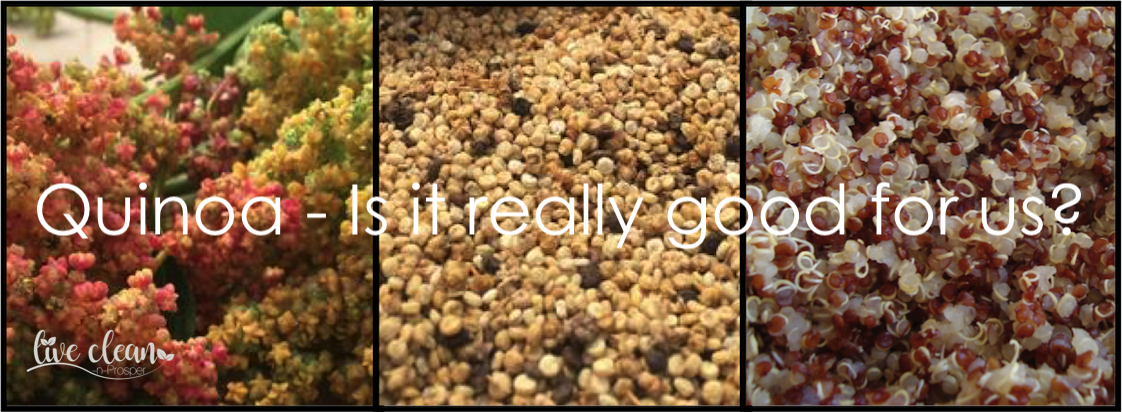Today’s topic is Quinoa.
Over the past couple of years we have included this food into our diet. It is another one of the so-called ‘super foods’ that have become popular with foodies. We were aware that it was meant to be better for us than rice, however it was only recently that I looked into how and why. (Sources – Wikipedia, Grains & Legumes Nutritional Council of Aust. )
So what is Quinoa?
Quinoa (pronounced keen-wah) originates from the Andes and is a staple food of the indigenous people there, the Quechua. It was domesticated 3,000 to 4,000 years ago for human consumption in the Lake Titicaca basin of Peru and Bolivia. Archaeological evidence shows livestock uses 5,200 to 7,000 years ago.
The ancient Incas called quinoa the “mother grain” and revered it as sacred. However, technically, quinoa isn’t a grain at all, but the seed of the Goosefoot plant. The goosefoot plant is not a grass, but rather plant botanically related to spinach and amaranth. It’s considered a ‘pseudo-cereal’. Loosely grouped with other grains due to being similar nutritionally and used in ways similar to ‘true’ grains.
To help ward off insects and birds, quinoa has a bitter residue of saponins, a natural occurring plant-defence. This makes it easier for farmers to grow the food organically. After harvest, the seeds are processed to remove the bitter-tasting outer seed coating.
It is still a good idea to thoroughly rinse the seeds under running water prior to cooking.
Is Quinoa a ‘Super food’?
Quinoa is gluten free and provides protein, dietary fibre, B vitamins, and dietary minerals in rich amounts, above those of wheat, corn, rice, or oats.
It is considered to be a complete protein due to the presence of all eight essential amino acids needed for tissue development in humans. Our bodies don’t make all of these amino acids all by themselves, so we rely on our diets to supply them. Usually, only animal products like meat and eggs are able to provide all at once.
In regards to protein, Quinoa has twice the amount compared to other grains like barley, wheat, and rice.
It is a low G.I. carbohydrate, relatively low in fat, most of which is omega-6 polyunsaturated fat and is high in dietary fibre. One cup of cooked quinoa contains 40 fewer calories than the same amount of white rice, but the real benefit is in the carbohydrates. White rice contains almost 15 times the amount of carbohydrates than quinoa. Quinoa also provides more grams of fibre.
Quinoa is high in anti-inflammatory phytonutrients, which make it potentially beneficial for human health in the prevention and treatment of disease. It is definitely is good for us, I will leave you to decide if it’s ‘super’.
It is available in different forms
- Quinoa grain/seed – cooks in around 15 minutes and when cooked, reveals a small white tail (the germ of the kernel). Great as a light, fluffy side dish served instead of rice. It can also be added to soups, salads and baked goods.
- Quinoa flour – has a tasty, nutty flavour and is often used in gluten free baking. This flour can also be used as a thickener in sauces, soups and other dishes, especially in cases where additional protein may be beneficial.
- Quinoa flakes – are simply steam-rolled to create a quick cooking flake. The flakes can be used for a hot breakfast similar to porridge, added to pancakes, waffles or smoothies. Use them as a coating instead of breadcrumbs, or they may be used as an alternative to rolled oats in muffins or cookies.
Quinoa flakes are also great for thickening sauces, curries or casseroles. I actually add the flakes to my yoghurt at breakfast, increasing the fibre and protein content. They seem to disappear into the yoghurt and are virtually tasteless.
I hope that this information answers any questions you may also have had about this particular food. If you haven’t tried quinoa, give it a go, you may find you really enjoy it.
Till the next post,
Live clean n prosper.

